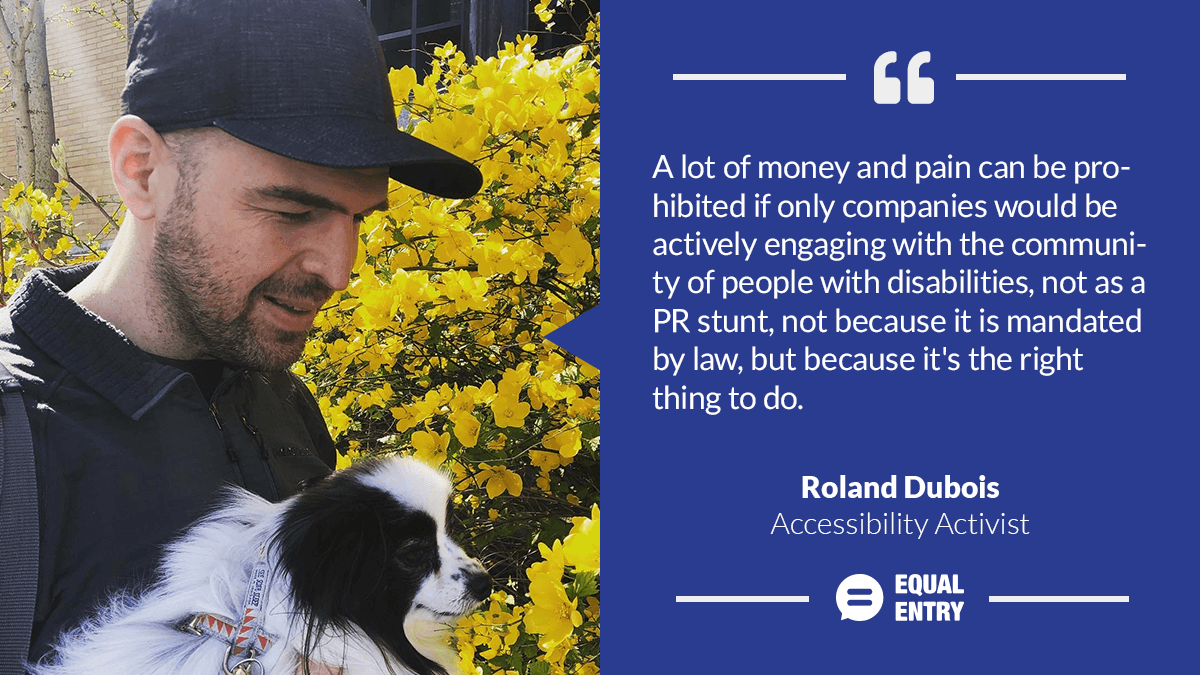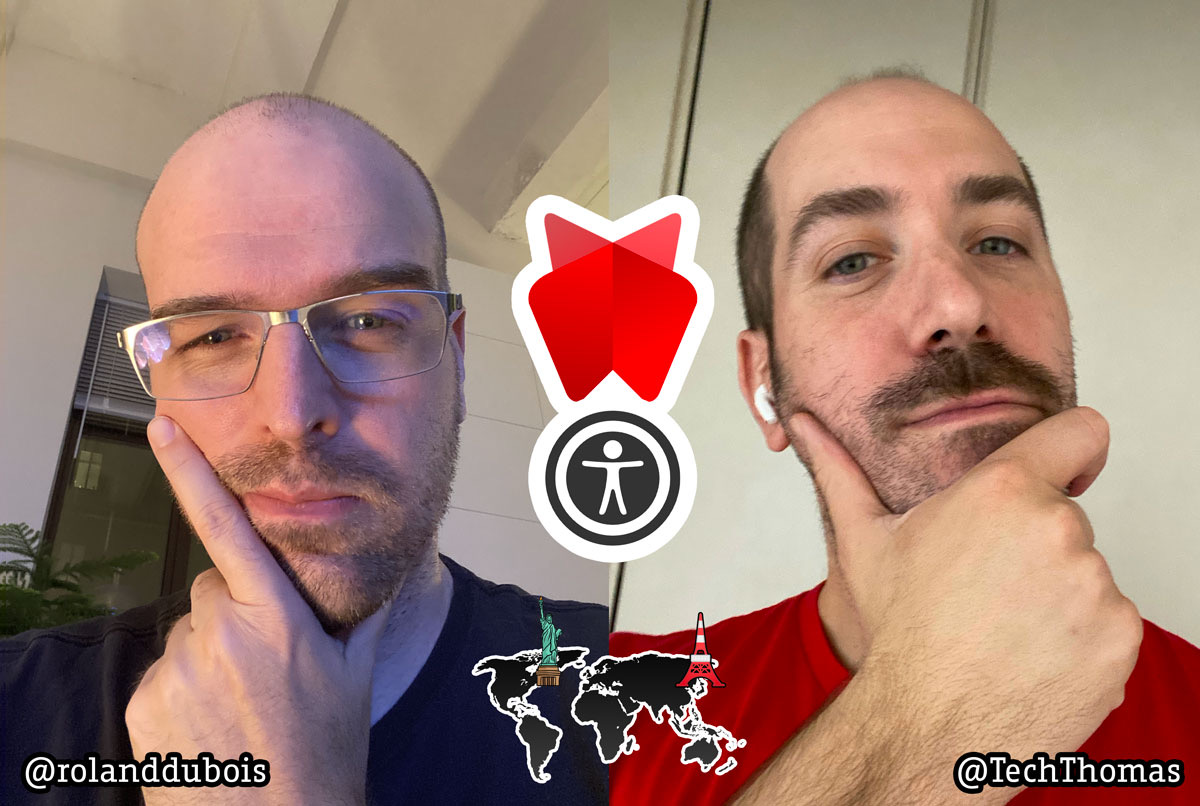Summary

Roland Dubois is the Product Design Manager and UX Lead at Shop-Ware, XR Accessibility at Virtuleap, publisher of the WebXRNews.com Newsletter, and creator of GRAVR — a globally recognized avatar for VR on the web.
How did you get your start in accessibility?
Early in my career as a designer and coder, I used many tools to visualize my product design concepts and to produce games and web experiences. When I was starting out, one of the fastest and easiest ways to build rich and cross-browser consistent experiences was by using proprietary software like Flash/Actionscript. Later, I realized that by taking that shortcut, I created products that were inaccessible and exclusive.
When I met Jeffrey Zeldman, co-founder of A List Apart and the Web Standards Project in 2013, I learned about the principles and objectives of the web standards movement. That inspired me to aim to create truly user-centered experiences for all users. I joined Jeffrey’s design studio as design director and worked on standard-compliant WCAG 2.0 AA certified projects for numerous industry-leading companies. Creating truly inclusive, scalable, accessible, and responsive web experiences became an ambitious goal that I set for myself, specifically in my own projects and the software products that I’m working on.
You are known for rapid prototyping. How do you incorporate accessibility into the design process?
Digital products that claim to be “user-centered” and are labeled “universal design” should be meeting a level of inclusivity and accessibility that is reflective of the user base. Often the user research participant pool of product design teams is selected with a marketing bias, which results in not getting an accurate representation of all the people that use the product.
To create products that reflect the N/N’s user experience heuristics of “Usefulness” and “Usability,” designers have to talk to a user research participant pool that is inclusive. You can’t design for accessibility if you don’t talk to people with disabilities. If you can’t easily find a person to talk to, search on YouTube for user testimonials, read on accessibility forums, and get in touch with accessibility Facebook groups. Make new friends! That’s where you have to start.
Progressive enhancement and graceful degradation are common terms used in web development. The idea here is to build something that takes advantage of the latest standards and device capabilities, while still being usable and useful on older devices and older browsers.
When designing a prototype, I define the outcome that the user expects when interacting with the product. Then I create multiple paths on how the user can reach their goals, whether it is through touch-swipe interfaces, keyboard, or voice control inputs. In my experience, multimodality and simplicity are key. I can measure the success of these universal designs by observing ease of use, task completion rates, and task completion speed.
We’ve been collaborating with you on many WebXR projects. You have a focus on WebXR. Why did you choose this area to focus on and what opportunities exist for the future?
I have followed the development of 3D visualizations on the web since its inception in 1994 when it was still a plugin-based VRML format. I learned about the Mozilla VR project, which was later renamed to the entity-based WebXR framework “A-Frame” in 2016.
I wrote an opinion piece about the medium of virtual reality on the web “VR Gets Real with WebVR,” where I predicted that the open distribution channels of the world wide web would create the traction VR needed to become useful and usable, with the caveat that there must be an accessible approach to virtual content in order to shed its gimmicky reputation. This was the moment where I started translating my accessibility learnings from traditional web projects into web-based immersive prototypes and experiments.
I am a problem solver at heart and I believe there is a very strong case for VR to become a mainstream content delivery method, just like the radio was at the beginning of the 20th century. In order to make VR mainstream, we have to include and slowly introduce it in our everyday products and make these experiences accessible.
Today, software solutions have to adhere to accessibility guidelines. If you want people to use VR, you have to offer delightful user experiences that are complementary to the already established relationship the users have with the product. Respect your users or you will lose them.

Opportunities for adjacent technologies like Machine Learning, Computer Vision, tracking human motion and brain interfaces to bypass physical disabilities can quickly turn into ethical controversies. If the human user cannot control whether the input technology is turned on or off, you will rob them of their human dignity.
As we learned from social media platforms, any data gathered from users is quickly monetized, and for that reason, I’m worried about these cutting-edge technologies. I’m, however, focused on translating established and proven accessible input mechanisms into the immersive medium. We don’t need to reinvent the wheel at all costs and call it “innovation.”
What is an accessibility barrier you would like to see solved?
The biggest barrier to accessibility is the lack of awareness in the industry. Even though digital service providers in the U.S. have been proven to be legally obliged to provide inclusive and accessible product experiences, their own employees don’t know about it. Since most engineering schools do not teach web programming with Web Content Accessibility Guidelines, fresh and affordable engineering talent steps up to build software that is set up for massive tech debt. There are many startups and even established companies that settle Americans with Disability Act (ADA) compliance letters out of court just to prevent bad PR.
More than once in my career, I have come across companies where the leadership team saw “dealing with” ADA compliance letters as a “cost of doing business.” Subsequently, they opted to band-aid the current software stack to “make it accessible,” missing an opportunity to share a broader understanding of their user base with their employees.
A lot of money and pain could be saved if only companies would be actively engaging with the community of people with disabilities, not as a PR stunt, not because it is mandated by law, but because it is the right thing to do and makes a better product experience for everyone.